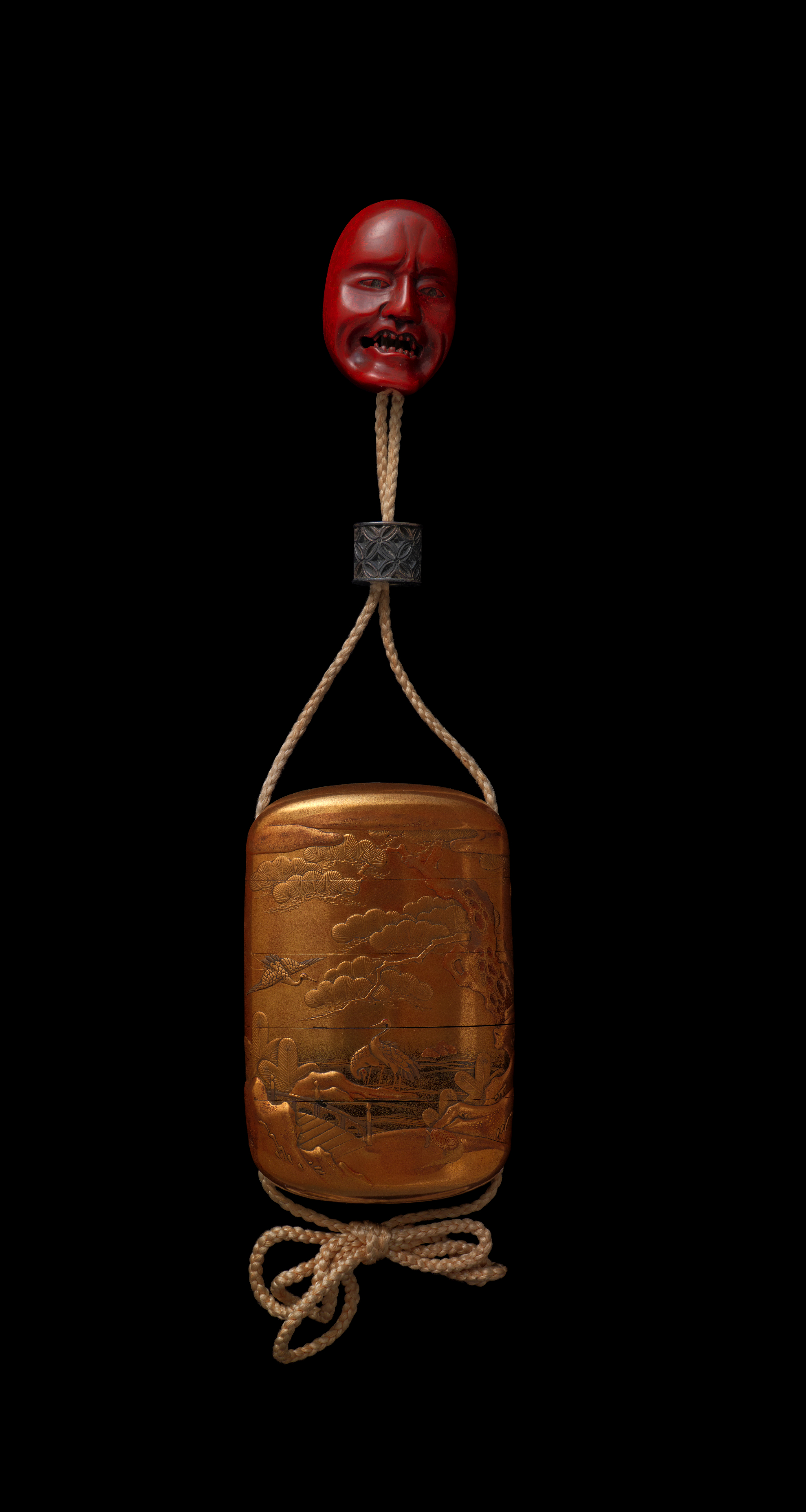
- Japan,18th–19th centuries
- Lacquer
- Inv. 1337
Inrō
This four-case inrō, in brownish lacquer with gold decoration in relief attained by the application of powdered gold, in takamie technique, depicts a lakeside scene in which we can see, between rocks, pine trees, bamboo, plum trees and storks, all elements symbolically linked to longevity. The signature ‘Jokwasai’ is visible on the inside. The ojime, cylindrical in shape is decorated with stylised flowers while the netsuke, sculpted in red lacquer has the form of a mask.
The inrō is a small portable case, usually in a flattened, elliptical shape, made up of various compartments that fit perfectly one on top of the other remarkably watertight. They were generally used to carry medicinal plants and powders and were suspended from the kimono sash. The boxes are joined by silk cords that hold them together, the ends of which are fastened by the ojime, a kind of round bead, which keeps the cases together. The ends of the cord are finished off by the netsuke that acts as a button and prevents the inrō from slipping from the belt.
Sir Trevor Lawrence Collection. Acquired by Calouste Gulbenkian, through Gudénian, at the sale of the Sir Trevor Lawrence Collection, Christie's, London, 6 November 1916 (lot 186).
H. 8.4 cm